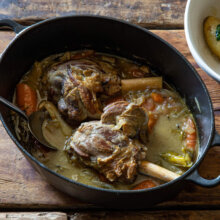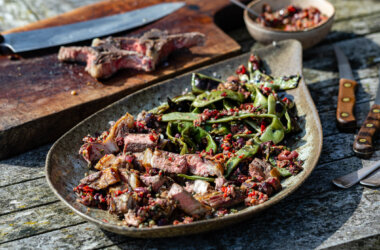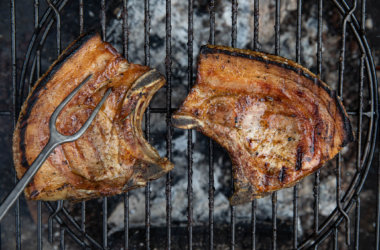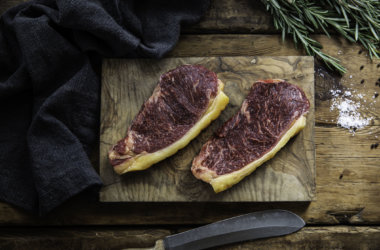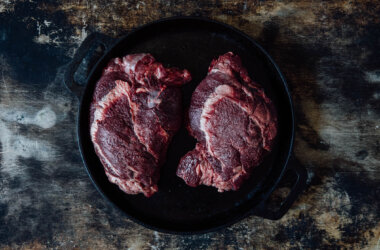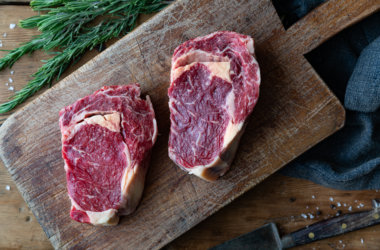A rich and comforting stew whose process is rooted in the best traditions of braising that British cuisine has to offer, all encased inside a thick layer of suet pastry.
It’s one of the classic dishes of these Isles, and it wholly deserves to take centre stage at our dinner tables. Ignore the temptation to dive into one of those exotic cookbooks in your selection and go British, at least once in a while. The sense of excitement when you first cut into that bulging pudding will be palpable.
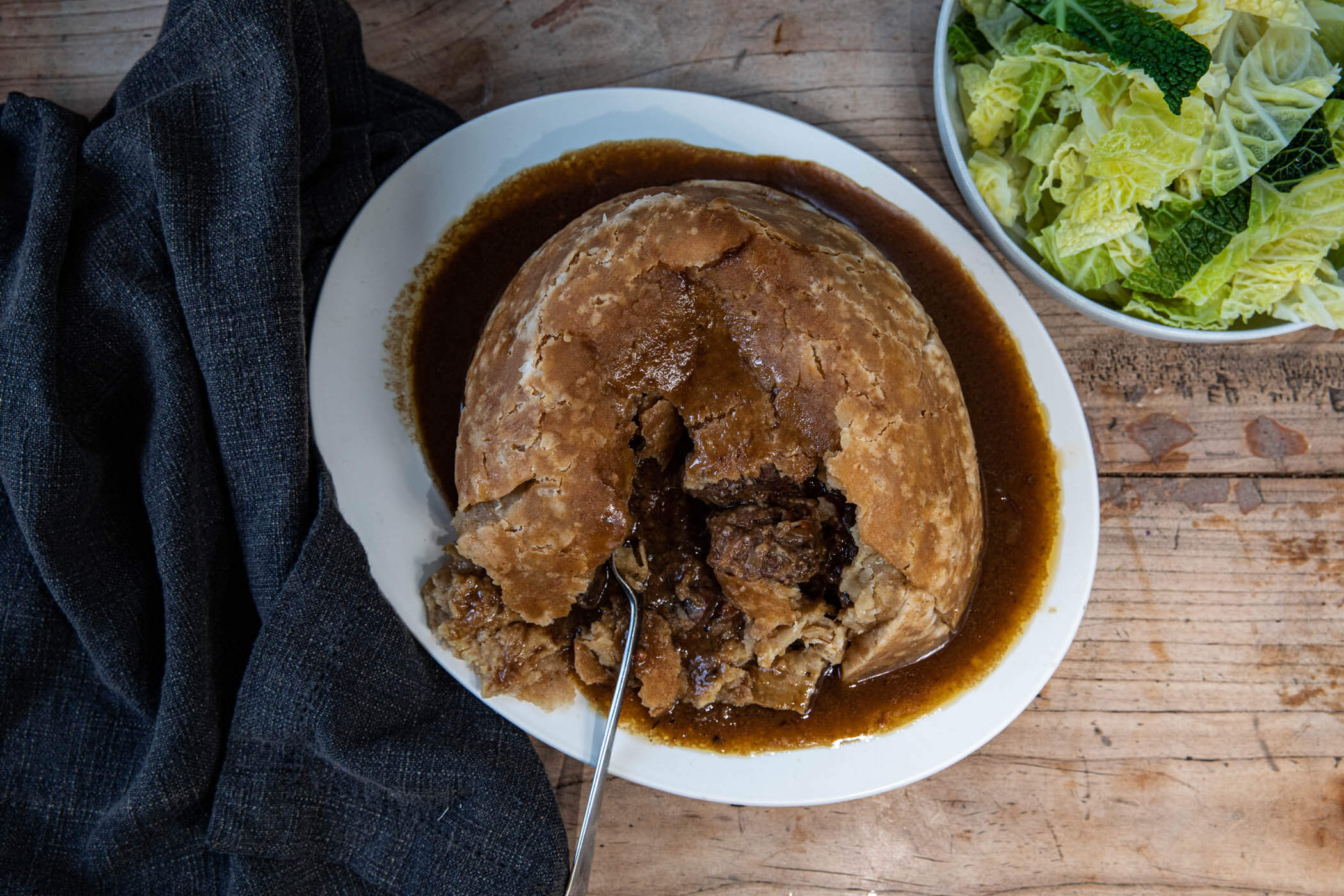
Ingredients
Stew
Suet pastry
Method
For the pastry:
- First off, make the pastry. Put the flour, suet, and a teaspoon of salt into a large mixing bowl. Mix together and then make a well in the middle. Add the water and bring it together with your hands. You may need to add a little more water if it looks dry. Knead it together, being careful not to over-mix it. Once it has come together as a dough, wrap it in cling film and leave it in the fridge to rest.
For the stew:
- Next, turn your attention to the stew. You will need to trim up the kidney to remove from the tough white sinew running through the middle. Then chop into pieces that are about the same size as the beef shin.
- Combine the flour and the mustard powder in a bowl, along with a good pinch of salt and 6 twists of black pepper. Then add the shin and the kidneys and toss together so the meat is nicely coated.
- Take a large casserole pot and place on a high heat. Add the dripping and then the beef/kidney in small batches, with the aim of browning all the meat. Once browned, remove from the pan and set aside.
- Once all the meat is browned and set aside, add the carrot, onions, and bouquet garni to the pot, along with a pinch of salt. On a medium heat, sweat off the veg, stirring regularly.
- Return the beef to the pot with the vegetables, then add the stout and the stock. Stir it all together, and then bring to a boil. Turn down to a simmer and cover with a lid and allow to very gently bubble away for about an hour and 45 minutes. Check the seasoning and adjust as necessary.
- Take it off the heat and leave to cool.
For the pudding:
- To make the pudding, you will need a pudding basin. Liberally grease the inside of it with any remaining dripping. Take the suet dough and cut off ¾ of the dough. Take the large piece and roll it out to about ½ a cm thickness, in a circular shape. Use this piece to line the inside of the pudding basin. Pressing it into the bottom of the basin and then against the sides. There should be a fair amount of excess pastry over the lip of the basin.
- Take the smaller piece and roll it to the same thickness, again in a circle. This will be the lid.
- Fill the lined pudding basin with the cooled stew, right to the top. Reserve a little bit of the ‘gravy’ from the stew for serving later. Place the lid on top and then seal the pastry together – the pastry from the lid pressed to the excess pastry from the basin. Then, with a knife, trim around the edge of the bowl to remove the excess.
- Take a sheet of parchment paper large enough to cover the top of the pudding basin. You will need to fold a crease into the parchment’s middle so that there is room for it to expand when the pudding is steaming. Using some string or butchers’ twine, tightly fit the parchment around the basin. Then take another length of string and tie it across the top of the basin, creating a sort of handle to lift the bowl out of the pot – this will be useful later when the basin is piping hot!
- Take a large pan that is big enough and importantly, tall enough, to house the pudding basin. Roll a sheet of tin foil into a sausage and then a ring a put it in the bottom of the pan. This will be a little nest for the basin to sit on so that it is not in direct contact with the bottom of the pan. Place the basin on top of the foil nest and then fill with water until it reaches ¾ of the way up the basin.
- Cover with a lid and bring to the boil. Reduce the heat to a simmer and leave to cook for 4 ½ hours — topping up the water as necessary as you go.
- Carefully remove the basin from the pot and, continuing to be careful, untie the string and remove the parchment paper.
- Find a plate that is big enough and place it over the top of the pudding. Lift the pudding in one hand with a cloth and place your other hand on the plate, before proceeding to flip the pudding upside down. Lift the bowl off the pudding, hopefully to reveal a full, steaming pudding! Oh joy!
- Heat the reserved ‘gravy’ and pour it all over the pudding to serve. Some savoy cabbage, blanched and dressed in a little butter is your best bet as an accompaniment.


